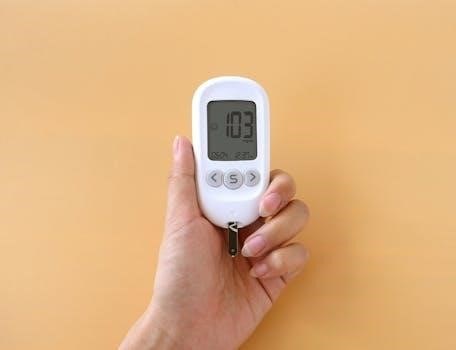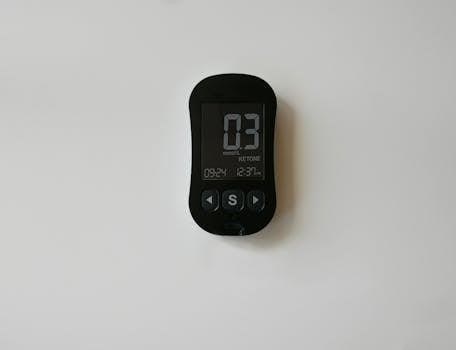Asthma Control Test for Individuals 12 and Older
The Asthma Control Test (ACT) is a tool for individuals aged 12 and older to assess their asthma control. It helps patients and doctors understand how well asthma is being managed. The ACT is a trademark of QualityMetric Incorporated.

The Asthma Control Test (ACT) is a significant questionnaire designed to help individuals, aged 12 years and older, evaluate the extent to which their asthma is under control. It is a simple, yet effective, method to gain a clearer understanding of how asthma affects daily life. The ACT serves as a valuable tool for both patients and healthcare providers, offering a structured way to assess asthma symptoms, limitations, and overall impact. By utilizing the ACT, individuals can actively participate in managing their condition and have more informed discussions with their doctors. The test provides a numerical score which aids in determining whether asthma treatment plans are effective or if adjustments are needed. This proactive approach to asthma management can lead to improved quality of life and reduced instances of asthma exacerbations. The test’s accessibility and ease of use make it a practical option for regular monitoring and helps in promoting better asthma control outcomes. The American Lung Association supports the use of the ACT for this age group.
Target Audience⁚ 12 Years and Older
The Asthma Control Test (ACT) is specifically designed for individuals aged 12 years and older, recognizing the unique challenges and experiences faced by this age group in managing asthma. This focus ensures the questions and scoring system are relevant to teenagers and adults, capturing the specific nuances of asthma symptoms and their impact on daily activities. The ACT is intended to be used by anyone in this age range who has been diagnosed with asthma, regardless of severity or treatment plan. This includes those who are newly diagnosed, as well as those who have been managing their asthma for years. It serves as a consistent method for ongoing self-assessment, helping individuals track changes in their asthma control over time. The targeted approach of the ACT for this age group helps in facilitating better conversations with healthcare professionals, leading to more effective and personalized treatment strategies; It is a tool that empowers teenagers and adults to actively participate in their asthma care, promoting a sense of control and well-being. Furthermore, the test’s age-specificity allows for more accurate interpretation of results, making it a valuable resource for both patients and clinicians.

Purpose of the Asthma Control Test
The primary purpose of the Asthma Control Test (ACT) is to provide a standardized method for assessing the level of asthma control in individuals aged 12 years and older. It serves as a tool for both patients and healthcare providers to evaluate how well a person’s asthma is being managed. By completing the ACT, individuals can gain a clearer understanding of their current asthma symptoms and how they affect their daily life. This self-assessment helps to identify whether their current treatment plan is effectively controlling their asthma or if adjustments may be needed. The test is designed to be simple and quick to administer, making it a convenient option for regular monitoring. Furthermore, the ACT facilitates meaningful discussions between patients and their healthcare providers, allowing for collaborative decision-making regarding treatment options and management strategies. It also aids in the ongoing evaluation of treatment effectiveness over time, ensuring optimal asthma control. Ultimately, the ACT aims to empower individuals to take an active role in their asthma care and improve their overall quality of life. It is a valuable resource for achieving the best possible outcomes in asthma management.
How the Asthma Control Test Works
The Asthma Control Test (ACT) functions as a brief, self-administered questionnaire designed to capture an individual’s experience with asthma over a specific period. Typically, the test comprises a series of five questions that focus on common asthma symptoms and their impact on daily activities. These questions might inquire about the frequency of symptoms such as shortness of breath, wheezing, coughing, and nighttime awakenings due to asthma. Additionally, the questionnaire addresses how asthma affects a person’s ability to perform regular tasks and participate in physical activities. Each question is structured with a multiple-choice format, allowing individuals to select the response that best reflects their experience. The answers are then assigned numerical values, which are summed to produce a total score. This score serves as an indicator of the level of asthma control. The test is intended to be completed by the individual themselves, providing a subjective but valuable insight into their perception of their asthma. The simplicity of the questionnaire ensures that it can be administered quickly and regularly, facilitating ongoing monitoring of asthma control.
Scoring the Asthma Control Test
The Asthma Control Test (ACT) employs a straightforward scoring system to quantify the severity of asthma symptoms. Each of the five questions in the ACT questionnaire is associated with a numerical value, typically ranging from one to five, where one represents the least favorable condition and five signifies the most favorable. Once an individual has responded to all the questions, the corresponding numerical values for each answer are summed up. This resulting total provides the final ACT score. For instance, if the individual selects an answer that indicates severe symptoms, it will contribute a lower score to the total. Conversely, responses that suggest minimal to no symptoms or a high ability to engage in activities will contribute a higher score. This cumulative score is then utilized to evaluate the overall level of asthma control. The scoring process is designed to be both quick and easy to perform, enabling patients and healthcare providers to rapidly assess asthma status. The total score derived from the ACT provides a numerical representation of the patient’s asthma experience, allowing for a more objective evaluation of their condition.

Interpreting ACT Scores
The interpretation of Asthma Control Test (ACT) scores is crucial for understanding the level of asthma control and guiding treatment decisions. The ACT score, which is the sum of the numerical values assigned to each question, ranges from 5 to 25. A higher score indicates better asthma control, while a lower score suggests poorer control. Generally, an ACT score of 20 or greater signifies that asthma is well-controlled. Individuals with scores in this range typically experience minimal symptoms, have good lung function, and can participate in daily activities without significant limitations. A score between 16 and 19 suggests that asthma is not well-controlled, and the person may be experiencing more frequent symptoms or limitations. It is advisable for individuals in this range to discuss their symptoms with a healthcare provider to evaluate whether adjustments to their management plan should be made. An ACT score of 15 or less indicates poorly controlled asthma. This suggests that the individual is likely experiencing significant symptoms and limitations. Those with an ACT score in this range should seek medical attention promptly for a thorough evaluation and management adjustments. It’s important to note that the ACT score is a guide, and interpretations should be done in conjunction with a healthcare provider, who can consider other factors, such as individual patient history and medical findings.
Importance of Discussing Results with a Healthcare Provider
Discussing the results of the Asthma Control Test (ACT) with a healthcare provider is a critical step in effective asthma management. The ACT score provides valuable information about how well asthma is controlled, but it is not a substitute for a comprehensive evaluation by a medical professional. A healthcare provider can interpret the ACT score in the context of an individual’s overall health, medical history, and specific asthma triggers. This personalized approach helps in developing an appropriate treatment plan. Furthermore, healthcare providers can assess the frequency and severity of symptoms, which may not be fully captured by the test alone. They can also evaluate the patient’s lung function through spirometry or other tests. Based on all these evaluations and test results, a provider can determine whether the current treatment plan is adequate or if adjustments are needed. Changes to medications, dosages, or the use of rescue inhalers may be necessary to achieve better asthma control. Moreover, a healthcare provider can provide guidance on lifestyle changes, such as avoiding triggers, and offer education on asthma management techniques. Regular consultations with a provider are essential to monitor the effectiveness of treatment and make any necessary adjustments over time. In summary, discussing ACT results with a provider ensures a tailored and effective approach to asthma management, resulting in better outcomes and improved quality of life.
The American Lung Association’s Support for ACT
The American Lung Association (ALA) is a strong advocate for the Asthma Control Test (ACT) and actively supports its use among individuals aged 12 and older who are living with asthma. The ALA recognizes the ACT as a valuable tool in asthma management and encourages everyone in this age group to take the test. This support stems from the ALA’s mission to improve lung health and prevent lung disease. By promoting the ACT, the ALA aims to empower individuals to take an active role in managing their asthma. The ALA believes that regular assessment of asthma control is crucial for effective treatment and improved quality of life. They emphasize the importance of discussing ACT results with healthcare providers to ensure appropriate interventions. The ALA provides resources and educational materials to help individuals understand the ACT and its role in asthma management; They also work with healthcare professionals to promote the use of the ACT in clinical practice. Through their support, the ALA seeks to raise awareness about asthma and encourage proactive management strategies. The ALA’s commitment to lung health makes them a vital partner in promoting the use of the ACT as a key component of comprehensive asthma care for people 12 years of age and older. They believe that using the ACT will result in better health outcomes for individuals with asthma.
ACT as a Tool for Asthma Management
The Asthma Control Test (ACT) serves as a crucial tool in the comprehensive management of asthma for individuals 12 years and older. It provides a structured method for assessing the level of asthma control, going beyond just symptom tracking. By using the ACT, patients can actively participate in their care, gaining a better understanding of how their asthma affects their daily lives. The test helps both patients and their healthcare providers identify whether the current treatment plan is effectively managing the condition. The ACT is a practical way to determine if adjustments to medication or lifestyle are necessary. Regular use of the ACT allows for ongoing monitoring of asthma, helping to prevent exacerbations and improve long-term outcomes. The results of the ACT can guide discussions with healthcare providers, facilitating personalized asthma management strategies. It helps healthcare professionals make informed decisions about adjusting treatment plans, ensuring that patients receive the most appropriate care. This tool is not just a one-time assessment but a process that encourages continuous evaluation of asthma control. It also promotes proactive management, empowering individuals to take responsibility for their health. The ACT is a powerful resource for achieving better asthma control and improved overall well-being for those aged 12 and older;
Comparison to Childhood Asthma Control Test (4-11 years)

The Asthma Control Test (ACT) for individuals 12 years and older is distinct from the Childhood Asthma Control Test, which is designed for children aged 4 to 11 years. While both tests aim to assess asthma control, they are tailored to the specific developmental and cognitive differences of their respective age groups. The Childhood ACT often includes a section for the child to complete and a section for a parent or caregiver, recognizing that younger children may not fully grasp the nuances of their symptoms. In contrast, the ACT for those 12 and older is designed to be self-administered, reflecting the increased capacity for self-reporting and understanding of symptoms in adolescents and adults. The questions in each test are also different, reflecting the different ways asthma might impact the daily lives of younger children versus older individuals. For example, the Childhood ACT may focus on limitations in play and physical activities, whereas the ACT for older individuals may focus more on work, school, and social activities. Additionally, the scoring mechanisms and interpretations may vary slightly, reflecting the unique considerations for each age group. It’s important to use the correct test for the appropriate age to obtain the most accurate assessment of asthma control. These differences underscore the necessity of using age-specific tools for effective asthma management.
Alternatives to ACT for Younger Children
While the Childhood Asthma Control Test is designed for children aged 4-11, there are situations where alternatives are considered, especially for those younger than 4 years old. For very young children, the Test for Respiratory and Asthma Control in Kids (TRACK) is one option, specifically designed for children under 5 years of age with a history of wheezing, shortness of breath, or cough lasting more than 24 hours. Additionally, asthma diaries can serve as an alternative, particularly if administered as a web-based tool, helping track symptoms and medication use over time. These diaries are especially useful when direct assessment through questionnaires is challenging due to the child’s age or ability to communicate effectively. Clinicians also rely on observational assessments, parent reports, and clinical examinations to gauge asthma control in very young children. These methods may include noting the frequency of symptoms, the use of rescue medications, and the impact on daily activities. It is crucial to remember that direct self-reporting is often not feasible for children below the age of four, so these indirect methods become vital for asthma management. Although there are no validated alternatives for the Childhood ACT in the absence of a caregiver, the combination of these approaches aims to provide comprehensive assessments for younger children.
Limitations of the Asthma Control Test
The Asthma Control Test (ACT), while a valuable tool, does have certain limitations to consider. Firstly, the ACT is a subjective measure, relying on the individual’s perception of their asthma symptoms and their impact. This can be influenced by personal biases or a patient’s understanding of asthma control. The test is not a substitute for objective clinical assessments, such as lung function tests, and should be used in conjunction with other diagnostic tools. Furthermore, the ACT is not designed to diagnose asthma; it solely assesses the level of control in individuals who have already been diagnosed with asthma. The test may not capture all aspects of asthma severity or individual variations in symptom presentation. For instance, some individuals may have infrequent but severe exacerbations that are not adequately reflected by the ACT score, highlighting the need for a holistic approach to asthma management. The ACT’s self-report nature also means that it can be influenced by recall bias, especially if the test is not completed close to the time period being considered. Lastly, the ACT is not intended for use in very young children, requiring alternative methods such as parent-report questionnaires or observational assessment for this age group. Therefore, healthcare professionals should consider the ACT as one of several tools in a comprehensive assessment of asthma control.
Where to Find and Access the ACT PDF
The Asthma Control Test (ACT) PDF, essential for assessing asthma control in individuals 12 years and older, can be accessed through various reliable sources. The most common place to find the ACT PDF is through healthcare provider offices, as they often utilize it as part of routine asthma management. The American Lung Association also supports the use of the ACT and may provide access to the PDF on their official website. Additionally, many online health portals associated with medical institutions or patient support groups may offer the ACT PDF for download. When searching online, be sure to use official or reputable sources to ensure you are using a validated copy of the test. It is essential to verify the source of the PDF to ensure accuracy, as using unofficial versions may lead to incorrect assessment. The Asthma Control Test is a trademark of QualityMetric Incorporated, and their official website might also offer the ACT PDF, though direct access may require registration or a healthcare professional account. Moreover, some pharmaceutical companies that produce asthma medications may also provide the ACT as a resource for patients. In summary, always prioritize accessing the ACT PDF from known and trusted sources to guarantee accuracy and reliability. Remember to discuss the results of the test with your healthcare provider for appropriate interpretation and treatment.

